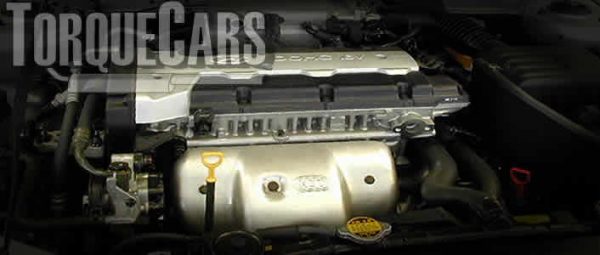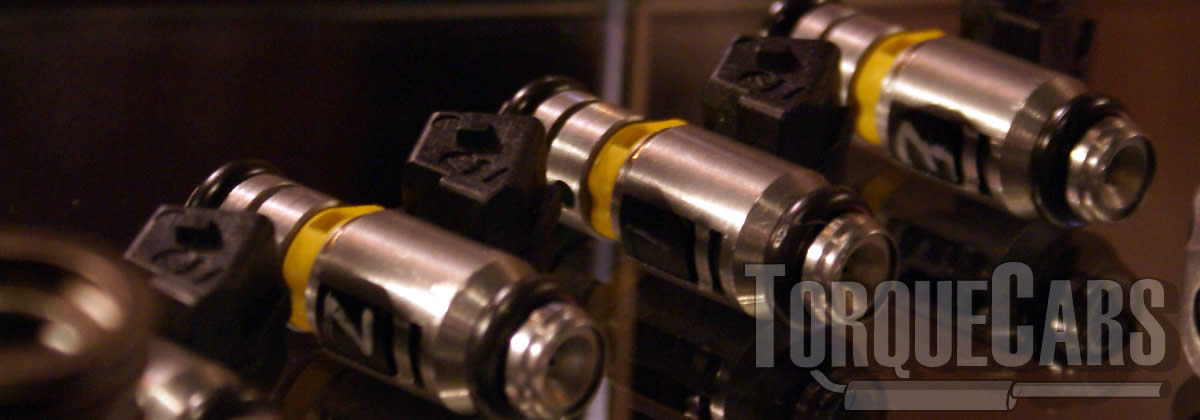Tuning the Hyundai Beta
"Building the best modified Hyundai Beta engine!"
Carref prides itself on providing the latest tips and guides to your modification project.
We review Beta tuning and show the greatest modifications. It was available in the following engine codes G4GC, G4GF, G4GR, G4GB and G4GM and appeared in quite a few cars, notably the Coupe and Elantra, and later the Kia Ceed, Cerato and Soul to name just a few.
It's size and power output was well suited to quite a few chassis styles and the engine received various tweaks over the years to improve it and refine it.
Hyundai Beta are popular cars and with the best performance tuning mods like a remap, turbo upgrades and camshafts you will really maximise your driving experience.
We rely on our visitors to pass on tips and tell us about their projects and what worked on their car, and this article is the culmination of the feedback we have received. First let us look at the history and specs of this engine and then consider which tuning modifications work best on it.
History of the Engine

A straight 4 block with a DOHC configuration.
- Beta 1.8D G4GM 1995 to 2003
- Beta 2.0D G4GF 1996 to 2001
- Beta 1.8D G4GB 2000-2010
- Beta 2.0D G4GC 2001 2012
What are the most effective Beta parts
When talking about the best best for your Beta engine, we are going to tuning parts that give the best power gain for you money.
The camshaft profile plays a big part in the engines power output so camshaft upgrades make quite a large difference. The intake and exhaust durations will alter depending on the chosen camshaft profile, so large bhp gains are on offer for camshaft upgrades.

Fast road camshafts tend to increase the bhp and torque throughout the rev band, you may sacrifice a little low down torque but high end rpm power will be higher.
Race camshafts, increase the high end rpm power band but as a result the car will not idle smoothly and low end power nearly always suffers.
In a car used daily should ideally to optimize your torque band to your preferences.
I'd be shocked find a Motorsport and race camshaft is a pleasure to live with when in heavy traffic.
Each engine responds better to more or less aggressive cam durations so set your engine up on a rolling road.
The ECU mapping and fuel pump and injectors also will make differences on the bhp gains you'll achieve.
Longer valve durations can alter the bhp band and on most engines the exhaust and intake durations do not need to match, although most cams and tuners use matched pairs there are some advantages to extending the intake or exhaust durations.
Please watch our introduction Video tutorial to car tuning. Be sure to subscribe and support our new channel.
How to tune your car
- Improve the handling
Focus on Suspension improvements, such as coilovers and make sure the bushings are in good order and that the alignment is correct. Then focus on improving the brakes, with a big disk brake conversion kit and fast road brake pads.
- Remove restrictions
Focus on the intake and exhaust with filters being the common point of restriction in a tuned car. Intercoolers may also become restrictive on turbo engines so this may also need to be uprated.
- Burn more fuel & air
Increase the fuelling so it matches the air coming into the engine. The ratio is important so you need to improve the fuel pump and injectors, so the head mods, big valve conversions, fast road camshafts and forced induction upgrades extra supply of air is adequately met.
- Test and replace any weak parts
Weak areas are commonly the clutch, the turbocharger and pistons and crankshaft in a highly tuned engine. Makes sure these components will cope with your power aspirations.
- The Tune or Remap
A cars ECU controls the fuel, timing, spark and even the turbo in some cases, so to fully extract your gains you should remap the car last and this will fully release the power. Some cars are easy to map, and others require piggyback ECU's or aftermarket ECU's but this is the most vital step of your tuning project.
Modifying to Stage 1:
Fast road camshaft, Sports exhaust manifold, Remaps/piggy back ECU, Panel air filters, Intake headers, Drilled & smoothed airbox, AFM/MAP upgrades.
Modifying to Stage 2:
high flow fuel injectors, Sports catalyst & performance exhaust, Fast road cam, fuel pump upgrades, induction kit, Ported and polished head.
Modifying to Stage 3:
Adding forced induction (turbo/supercharger), Engine balancing & blueprinting, Internal engine upgrades (head flowing porting/bigger valves), Crank and Piston upgrades to alter compression, Competition cam.
Mapping will help release the full potential of all the tuning parts you've done to your Beta.
It will usually give around 15% more power on NASP engines, but your mileage will vary depending on the tuning parts you've done and the condition of your engine.
Shoving more air and fuel into the Beta engine is the main goal to any engine tuning job.
Intake headers take the air from the filter and allow it to be sucked into the engine cylinders with fuel for the squish phase.
The bore size, shape and flow characteristics of the Intake headers can make a noticeable change to fuel mixing and power on the Beta.
Most air intake manifolds are needing motorsport parts, although some car makers provide reasonably good air intake manifolds.
Big valve conversions on the Beta, doing some port matching and head flowing will also improve performance, and as an added benefit will make space for increasing the performance increase on other upgrades.
Which turbo upgrades are best?

NASP engines need quite a lot of work when you add a turbo, so we have a separate guide to help you take into account the pros and cons of going this route on your Beta
The more air to get into an engine, the more fuel it can burn and uprating the induction with a turbocharger upgrade makes massive power gains.
When the engine is fitted with a turbo tuning mods are going to make more power and you will discover turbo charged engines are built with more solid components.
There are weak spots for every engine, with some being over specified and some just sufficiently able to handle stock power
It is important to find these restrictions and upgrade to higher quality components to utilize the power.
We see many drivers spending a loads of money on turbocharger upgrades on the Beta only to suffer the humiliation of seeing the whole thing catastrophically fail when it's been finished.
It is not unusual that there is a limit in the air flow sensor AFM/MAF on these engines when loads more air is being drawn into the engine.
We note 4 bar air sensors coping with quite large power gains, whereas the OEM air sensor limited torque at a much lower level.
Adding a supercharger or additional turbo will make large performance gains, although more challenging to install. We have a twincharger performance adding guide if you want to read more.
Fuelling
Don't omit to boost the fuelling when you are increasing the performance - it makes the car more thirsty.  It is important to over specify your flow rate on the injectors.
It is important to over specify your flow rate on the injectors.
The rule of thumb is to add 20% capacity when fitting an injector, this takes into account injector deterioration and gives a bit of spare capacity should the engine require more fuel.
We think this one is common sense, but you'll need to match your fuel injector to the type of fuel your car uses as well.
All the following flywheel power targets will assume an injector duty cycle of 80% and a base of 58 psi of fuel pressure at idle.
4 Cylinder NASP engines
- 58 PSI 285cc/min 200hp
- 58 PSI 426cc/min 300hp
Choosing the right performance exhaust
One of the most common mistakes and problems we see in tuning projects is usually down to the exhaust, or rather a poorly chosen exhaust for your engine.
You may need to boost your exhaust if your exhaust is creating a flow problem.
On most factory exhausts you'll see the flow rate is ok even on modest power gains, but when you start pushing up the power levels you will need to get a better flowing exhaust.
Sports exhausts can usually air flow from the engine but avoid an exhaust that is too big or you could will reduce the flow rate. Stick to 1.5 to 2.5 inches for best results.
Common exhaust restrictions are traced to the catalyst installed, so adding a better flowing high performance alternative will help avoid this restriction.
Weak spots Issues & problem areas on the
The engines are generally reliable and solid as long as they are regularly serviced and maintained, we've seen these with over 200,000 miles, and still pulling well with no smoke or issues.
The engine can be quite loud and has lots of vibration, this is quite normal and not a cause for concern but revised engine mounts can reduce this a little. If you get additional vibrations or rattles when braking or accelerating it could be an issue with the HT leads, soils or plugs, and replacing these will usually improve matters.
Regular oil changes are vital on the , especially when tuned and will help extend the life and reliability of the engine.
Revs can stay quite high, this seems to be an ECU related issue and a reset usually clears this problem.
For more information on Tuning your engine please join us in our friendly forum where you can discuss tuning options in more detail with our owners. It would also be worth reading our unbiased tuning articles to get a full grasp of the benefits and drawbacks of each modification.
Please help us improve these tips by sending us your feedback in the comments box below.
We love to hear what our visitors have got up to and which upgrades work best for them on each model of car. Comments are used to improve the accuracy of these articles which are continually updated.
If you liked this page please share it with your friends, drop a link to it in your favourite forum or use the bookmarking options to save it to your social media profile.
Check out TorqueCars new YouTube channel, and see their awesome new content...
Feedback
Please use our forums if you wish to ask a tuning question, and please note we do not sell parts or services, we are just an online magazine.
Help us improve, leave a suggestion or tip
